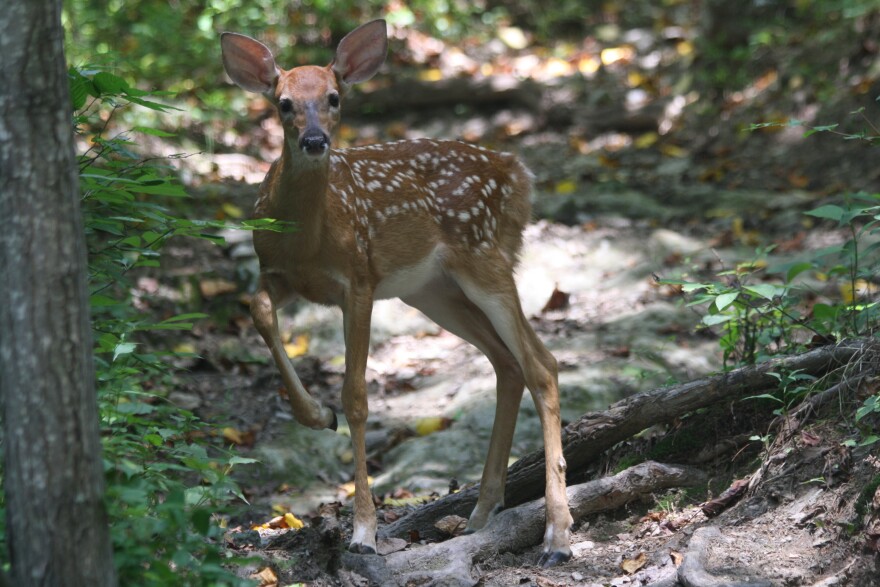Hundreds of white-tailed deer have been found dead in New York state — including in counties neighboring the Berkshires. This has some wildlife conservationists in Massachusetts quite concerned.
The state deer and moose project leader, Martin Feehan, tells me he's been working with counterparts in New York, and said the culprit is a virus called EHD.
Martin Feehan, MassWildlife: EHD, epizootic hemorrhagic disease, has been kind of increasing across the country, but it was first discovered in 1955 in New Jersey, actually. But, for the most part, it's been circulating in southern states.
In New York, they've had a number of outbreaks. Their first was in 200, but they've had additional ones in 2011 and then 2020, and now 2021.
What really makes this outbreak in 2021 different is just the scope. The previous outbreaks in New York were always isolated to only one or two counties. This one this year is now up to seven confirmed counties and nine additional suspected counties in New York.
Carrie Healy, NEPM: How does EHD spread?
So EHD is spread by biting midges, also known as no-see-ums, when they bite infected deer and then go and bite other deer. It often occurs around water sources. It's a highly seasonal disease and particularly happens during drier portions of the year, particularly in August and September, when you'll have deer that will start to come into limited water sources and concentrate around those. So you can have really rapid spread from those midges, from deer to deer in those periods of the year.
It can cause pretty significant die-offs, particularly in northern states, where there's been less exposure and less resistance developed.
Because it is a virus.
Correct.
So don't midges bite all kinds of animals, and people too? Will other animals suffer from this virus in the same manner as the deer?
So EHD is not actually a problem for humans. While, yes, midges can absolutely bite all sorts of animals and humans alike, the disease itself only impacts ruminants, and [only] ruminants that all have even toes.
Even amongst that, it's much more specific in terms of the species that it actually harms. So for the most part, the only species that have direct impacts or white-tailed deer and mule deer. There have been infections that have occurred with elk, however, they do not usually have severe infection, and moose do not appear susceptible at all.
There has been evidence of infection occurring with some domestic species, including goats and sheep. However, there has not been severe infection. So, for the most part, this is really predominantly just a wildlife issue. Where this can become an issue for domestic livestock is really for domestic cervid farms, places that have deer farms.
Is there a way to curb the spread of the virus? Do hunters and hikers and landowners who spend time outdoors in the forests have a role to play in this?
So, predominantly, the role that people outside play is allowing us to know where it's occurring. So if people see any deer that have symptoms...then they can report it to us and then we can know where it is occurring. There is currently no treatment available for EHD, and there is no strategic management plan, either nationally or in any state. So most of it is really about just seeing where it occurs.
It's really important to make sure that we see and detect the disease because there are other diseases that are very similar that can have larger impacts to livestock. These include bluetongue and foot-and-mouth disease. However, those diseases have not come to this portion of the country, and foot-and-mouth disease is not found in livestock in the United States. But the symptoms are very similar.
And so, part of what we want to do is make sure that we know where EDH is occurring. So that way, we know that it's not a rarer but more significant disease like foot-and-mouth disease or bluetongue.
So, when are we expecting to see this subside? Do the midges die off for the winter?
Yes, typically it starts to wane and then it all ends when there's the first hard frost. So when there's a hard frost, it'll kill all the midges for the year. For the most part, it actually starts to wane prior to the first frost.
Feehan said if you happen upon a weak or dead deer, you should report it to your local MassWildlife office.



